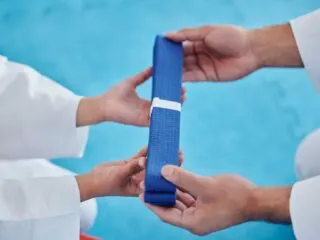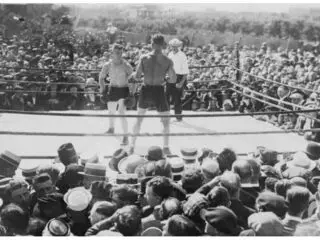Eligible taekwondo students will get an invitation to take a belt promotion test before the examiners. There are physical exercises, forms, sparring, breaking boards, and a written test as part of the promotion test. Examiners will promote you to a higher belt if you meet all the requirements.
STRIKING ARTS
The 10-point must system is a boxing scoring system. The winner gets 10 points, and the loser gets 9, 8, 7, or 6 points in each round, depending on how dominant the winner is. If the match goes the distance, the officials will tally up all three judges’ scores to determine the winner.
Karate Combat is a private brand that promotes and organizes the first professional full-contact karate league, contrasting traditional karate competition. Karate Combat adopts a unique set of rules and a unique fighting area to make the karate matches more exciting than traditional karate matches.
Full contact karate refers to a karate style or any form of karate competition that allows practitioners to knock out their opponents. In non-full-contact karate, knocking out your opponent can get you disqualified. In contrast, knocking out your opponent wins you a match in full-contact karate.
The Queensberry Rules refer to the rules published in 1867 by John Graham Chambers, a journalist, which provided clear guidelines for all fighters involved in a boxing match. These rules were necessary to attract a better class of patrons to boxing, which alienated many due to the sheer violence.
Taekwondo has four main styles that are also defined as separate organizations:
* Traditional style
* World Taekwondo
* ITF style
* ATA style






